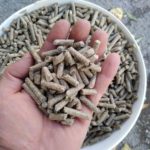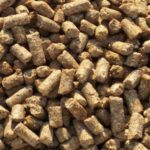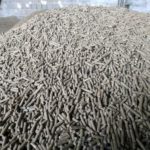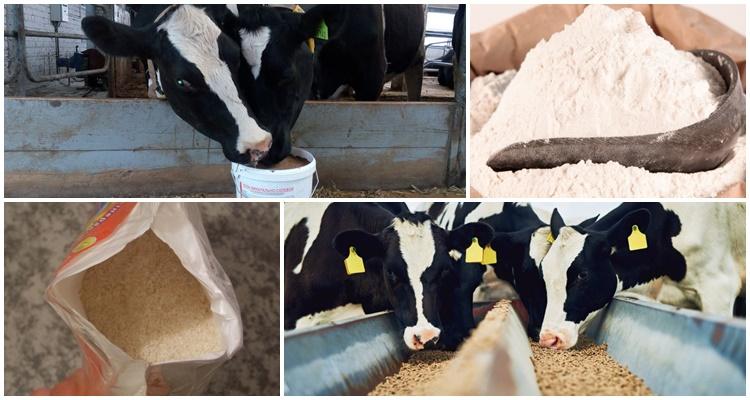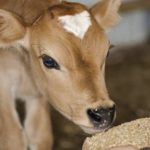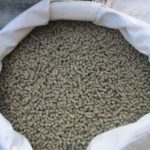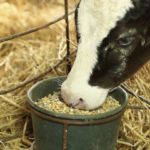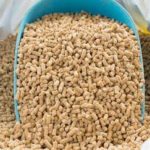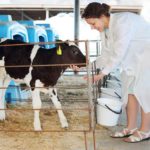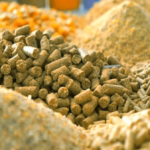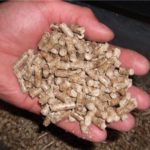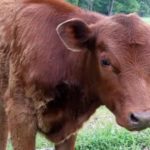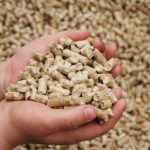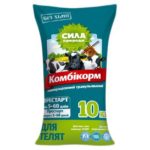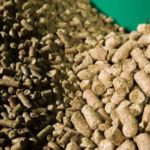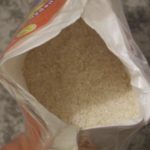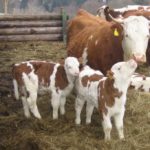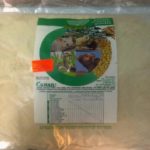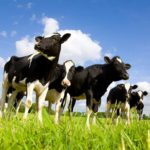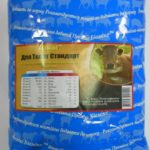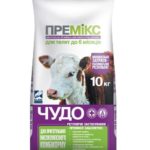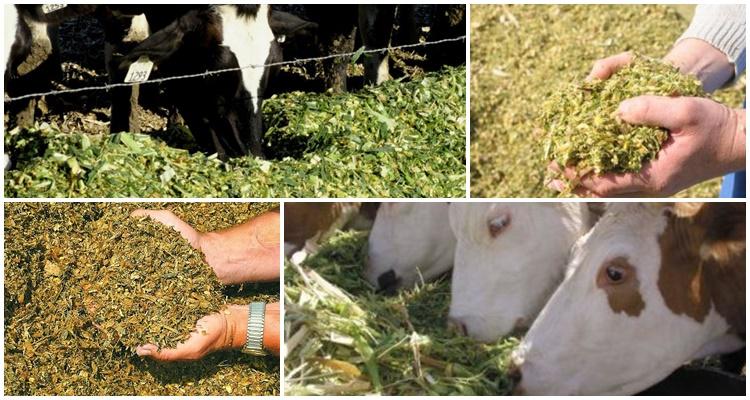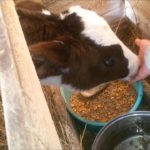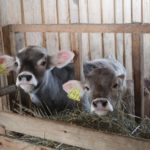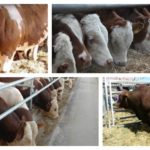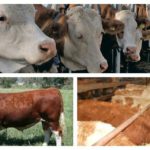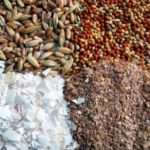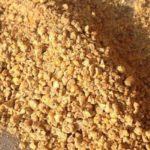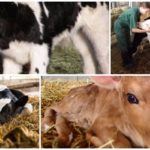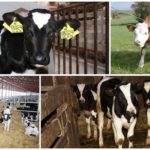Organizing nutrition using mixed feed is an important part of cattle breeding. When raising young animals using individually selected feed mixtures, it is possible to increase the weight gain of animals. Vitamins and minerals in feed additives help strengthen the immunity of animals. There are different types of feed for calves: granulated, briquetted, loose. Each has disadvantages and advantages.
What is feed and what is its composition?
Compound feed is a universal balanced mixture of plant, grain and animal components. Combined feeds are selected according to the age and type of cattle - dairy, meat and mixed. Special mixtures are produced for dairy cows and bull calves. The content of minerals and vitamins in them is selected taking into account age needs
The purpose of starter, or feed for calves, is to increase weight and strengthen the animal’s immunity. Therefore, it contains proteins. Fiber helps absorb nutrients and normalizes intestinal function. The product is enriched with minerals necessary for growth: magnesium, potassium, zinc, copper. The starter feed mixture contains the following vitamins and minerals:
- sulfur;
- manganese;
- cobalt;
- carotene;
- iodine;
- calcium;
- phosphorus;
- starch;
- retinol;
- calciferol;
- tocopherol
The approximate composition of feed for calves younger than six months and the proportion of components in the mixture are shown in the table:
| Component | Content in percentage |
| Wheat | 27 |
| Wheat bran | 24 |
| Corn | 34 |
| Barley | 30-37 |
| Oats | 15 |
| Salt | 1 |
| Soybean meal | 17 |
| Ethyl yeast (eprin) | 6 |
| Molasses (molasses) | 4 |
| Herbal meal | 4 |
| Feed fat | 3 |
| Calcium phosphate | 2 |
| Feed yeast | 7 |
| Chalk | 1 |
| Premix | 1 |
| Sunflower meal | 25 |
The set of components and nutritional value may vary depending on the manufacturer. The metabolizable energy obtained from feed varies from 9.8 to 12.2 megajoules.
Varieties
Starting mixtures are distinguished by release form and purpose. Different types of starters have advantages and disadvantages.
By release form
Compound feed is produced in granules, briquettes and loose form. The types differ in price and ease of use. Calves are more sensitive to feed than adult animals.Therefore, it is important to choose a feed mixture that is harmless to the digestion of animals.
loose
The components are ground into a homogeneous grain. The crumbly starter is distinguished by grinding: fine, medium and coarse.
Particles of identical components are collected into groups. When feeding, the mass turns out to be heterogeneous. There are more of some substances than others, so calves eat an unbalanced diet. They can also eat the component that is tastier and refuse the rest. Loose starter should be mixed before pouring into feeders. It is suitable for feeding calves in private homes. But the room in which animals are kept must be ventilated or hoods installed so that small grains of food do not become dusty in the air.
Granulated feed
The components are pressed into hard cylindrical lumps. Their diameter is designed for animals of different ages - 5-19 millimeters. The granular starter is suitable for automatic feed distribution systems on farms and for manual feeding of livestock in small farms.
During the production process, the components are subjected to heat treatment, so contamination by bacteria through granulated feed is excluded. A high-quality granulated starter has a high price and cannot be cheaper than loose feed.
Despite the disadvantages, feed in granules helps the growth of calves and is the most convenient to use.
Briquetted
The raw materials are pressed into rectangular briquettes. In this form, roughage - straw and hay - is better preserved. To bind the ingredients together, molasses is added to the mixture.
American and Canadian manufacturers use cane molasses, while domestic ones use processed sugar beets. Molasses speeds up metabolism. Therefore, calves fed on briquetted feed gain weight faster.
Compound feed in briquettes is widely used on large meat and dairy farms.
Compound feed according to purpose
Starters replace a complete diet for calves. Farmers also use fertilizers and food additives. The purpose of the food is determined by the labeling - capital letters on the packaging.
Complete (PC)
The product includes all types of food necessary for healthy development and does not require additional vitamin supplements. The product contains grain crops - oats, barley, wheat. Complete feed includes a pre-starter diet for calves from one to three months.
Depending on the age group of young animals, diets with different percentages of components are produced.
To ensure that maturing calves receive the necessary nutrients in each phase of development, it is necessary to change complete feed in accordance with their age group. Thanks to this feeding scheme, the productivity of animals increases.
Complete feeds are introduced into the animal menu gradually.
Concentrated (K)
Concentrates contain more protein, fiber and minerals. They are added to the main, independently selected diet. Based on their composition, there are two types of concentrated feed:
- carbohydrate - corn, millet, wheat and barley increase the carbohydrate content in the product by up to 75 percent;
- protein - 25 percent consists of protein thanks to legumes.
Concentrated feed is given in winter with silage, hay, vegetables and grain, but its share should be less than half of the daily ration.
Feed mixtures
The composition includes protein or carbohydrate concentrates and herbal flour. To combine the ingredients, molasses or urea is added, from which the calves obtain nitrogen.
In the intestines of small calves, the microflora is not sufficiently developed, so it is difficult for them to digest ammonia.
Additives (BVD)
The feed mixture contains a complex of vitamins, proteins and mineral salts, which ensure normal growth and development of calves.With the help of BVD they enrich their own prepared feed mixture. The norm for the additive in the daily diet is 25 percent.
The use of a protein supplement allows animals to be fed grain crops with low protein content.
Premixes (P)
Premix is a type of food additive that consists of wheat, wheat bran, soybean meal and rapeseed cake. The permissible proportion of premixes in the diet of young animals is 1 percent.
When storing premixes, you must follow the instructions and avoid increasing the humidity in the storage.
At what age can you give
Farmers recommend starting feeding calves ready-made formulas from the first week after birth. Pre-starter feeds can be given from the third day. For three months, the young animals must feed on their mother's milk. But calves intended for fattening should be given ready-made feed mixture from an early age.
There are two types of start:
- for small calves up to one month;
- for feeding animals from the first to the third month.
Young animals weighing 70 kilograms at 2.5 months are gradually weaned from milk.By three months, animals are given 1.5 kilograms of concentrate per day.
How to accustom a calf to feed
Starter feed develops and expands the stomach of calves. Cows and bulls fed a feed mixture from an early age consume more food and gain weight better.
How to feed calves:
- the feed is diluted with water to a mushy mass;
- give a handful a day;
- Uneaten food is removed and a new portion is added the next morning;
- offer to eat from the palm of your hand.
Calves need to have a water trough and change the water every day. Drinking plenty of fluids promotes rumen development and the absorption of dry food. To prevent food from getting into the water, dishes with water are placed in the opposite part of the stall. On the seventh day, the calves are offered hay, and on the twenty-first day, chalk and salt. Carrots, beets and apples are also included in the menu. Vegetables are chopped and a vitamin premix is added. On the thirty-second day you can give bran.
Boiled potatoes, whole and skim milk, as well as complete feed for the corresponding age group are suitable for starting complementary feeding.
Young bulls are given as much feed as they can eat without harm to digestion. Gradually the amount eaten increases. In the fourth month, complete starter feed can be introduced into the diet. When the amount of the mixture eaten reaches one and a half kilograms per day, grain concentrates or adult feed are added to it.

